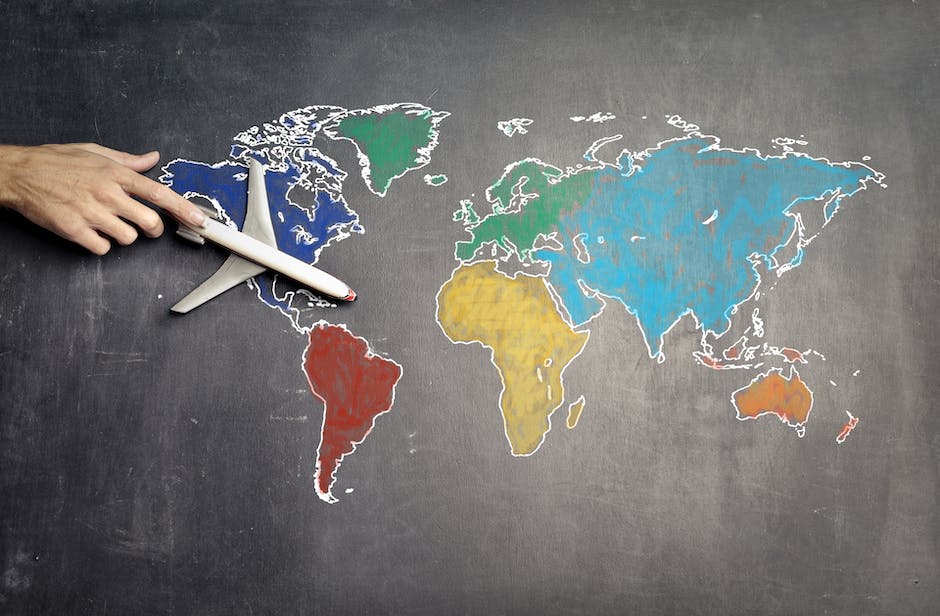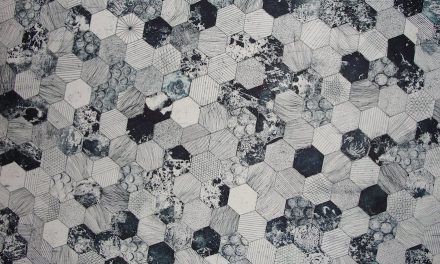Table of Contents
- Introduction
- The Historical Significance of Arab Cartography in Shaping Strategic Leadership
- Exploring the Role of Arab Cartography in Geopolitical Decision-Making
- Analyzing the Impact of Arab Cartography on Military Strategy and Tactics
- The Evolution of Arab Cartography and its Relevance to Modern Strategic Leadership
- Q&A
- Conclusion
Unveiling the Power of Arab Cartography in Strategic Leadership.
Introduction
The Influence of Arab Cartography on Strategic Leadership
Arab cartography has played a significant role in shaping strategic leadership throughout history. The art and science of mapmaking in the Arab world has not only provided valuable geographical knowledge but has also influenced strategic decision-making and leadership practices. This influence can be observed in various aspects, including the exploration of new territories, military campaigns, trade routes, and the dissemination of knowledge. By examining the impact of Arab cartography on strategic leadership, we can gain insights into the historical significance and enduring legacy of this field.
The Historical Significance of Arab Cartography in Shaping Strategic Leadership

The historical significance of Arab cartography in shaping strategic leadership cannot be overstated. Arab cartographers made significant contributions to the field of mapmaking, which in turn had a profound impact on the way leaders strategized and navigated their territories. This article will explore the influence of Arab cartography on strategic leadership throughout history.
Arab cartography emerged as a prominent discipline during the Islamic Golden Age, which spanned from the 8th to the 14th centuries. During this time, Arab scholars made groundbreaking advancements in various fields, including mathematics, astronomy, and geography. These advancements laid the foundation for the development of accurate and detailed maps.
One of the most notable Arab cartographers was Al-Idrisi, a 12th-century geographer and traveler. His work, known as the Tabula Rogeriana, was a world map that combined knowledge from various cultures and civilizations. Al-Idrisi’s map was highly accurate for its time and provided valuable information about the world’s geography.
The accuracy and detail of Arab maps had a direct impact on strategic leadership. Leaders could now make informed decisions about their territories, plan military campaigns, and navigate unfamiliar regions with greater confidence. Arab maps provided crucial information about trade routes, natural resources, and potential threats, enabling leaders to make strategic decisions that would shape the course of history.
Arab cartography also played a significant role in the Age of Exploration. European explorers, such as Christopher Columbus and Vasco da Gama, relied on Arab maps to navigate uncharted waters. These maps provided valuable information about wind patterns, currents, and coastal landmarks, allowing explorers to venture into unknown territories with a higher degree of certainty.
The influence of Arab cartography on strategic leadership extended beyond navigation. Arab maps also provided insights into the political and cultural landscape of different regions. Leaders could use this information to forge alliances, negotiate treaties, and understand the dynamics of foreign societies. Arab maps became valuable tools for diplomacy and statecraft, enabling leaders to make informed decisions that would shape their nations’ destinies.
Furthermore, Arab cartography had a profound impact on the development of military strategies. Leaders could now analyze the topography of their territories and plan defensive positions accordingly. They could identify chokepoints, natural barriers, and advantageous positions, giving them a strategic advantage in times of conflict. Arab maps provided leaders with a comprehensive understanding of their territories, allowing them to devise military strategies that maximized their strengths and exploited their enemies’ weaknesses.
In conclusion, the historical significance of Arab cartography in shaping strategic leadership cannot be understated. Arab cartographers made significant contributions to the field of mapmaking, providing leaders with accurate and detailed maps that influenced their decision-making processes. These maps enabled leaders to navigate their territories, plan military campaigns, and understand the political and cultural landscape of different regions. Arab cartography played a crucial role in shaping strategic leadership throughout history, and its influence can still be felt in the modern world.
Exploring the Role of Arab Cartography in Geopolitical Decision-Making
The field of cartography, the science and art of mapmaking, has played a significant role in shaping the course of history. Maps have been used for centuries to navigate the physical world, but they have also been instrumental in guiding strategic decision-making in the geopolitical realm. One particular area where cartography has had a profound influence is in the Arab world. Arab cartography, with its rich history and unique perspectives, has provided strategic leaders with valuable insights and tools to navigate complex political landscapes.
Arab cartography has a long and storied history, dating back to the Islamic Golden Age. During this period, Arab scholars made significant advancements in various fields, including mathematics, astronomy, and geography. These advancements laid the foundation for the development of sophisticated mapping techniques. Arab cartographers, such as Al-Idrisi and Ibn Battuta, produced detailed maps that not only depicted physical features but also included valuable information about trade routes, political boundaries, and cultural landscapes.
The influence of Arab cartography on strategic leadership can be seen in several ways. Firstly, Arab maps provided leaders with a comprehensive understanding of their territories and neighboring regions. These maps were not just static representations of the physical world; they were dynamic tools that allowed leaders to visualize the geopolitical landscape and make informed decisions. By studying these maps, leaders could identify potential threats, assess the strengths and weaknesses of their adversaries, and plan military campaigns accordingly.
Secondly, Arab cartography played a crucial role in facilitating trade and commerce. The Arab world has a long history of trade, and maps were essential in navigating the vast networks of trade routes that crisscrossed the region. Arab maps provided detailed information about the locations of markets, ports, and trading centers, enabling leaders to identify lucrative trade opportunities and establish economic alliances. These maps also helped leaders understand the economic potential of different regions, allowing them to allocate resources effectively and promote economic growth.
Furthermore, Arab cartography contributed to the spread of knowledge and cultural exchange. Arab maps were not limited to depicting political boundaries and trade routes; they also included information about the natural world, such as flora, fauna, and geological features. This wealth of knowledge was shared with other civilizations through trade and diplomatic exchanges, fostering intellectual curiosity and cross-cultural understanding. Arab maps served as a bridge between different civilizations, facilitating the exchange of ideas and contributing to the advancement of science and technology.
In conclusion, Arab cartography has had a profound influence on strategic leadership. Arab maps provided leaders with valuable insights into the geopolitical landscape, enabling them to make informed decisions and navigate complex political environments. These maps also facilitated trade and commerce, allowing leaders to identify economic opportunities and establish economic alliances. Additionally, Arab cartography contributed to the spread of knowledge and cultural exchange, fostering intellectual curiosity and cross-cultural understanding. The legacy of Arab cartography continues to shape the way strategic leaders approach decision-making, highlighting the enduring importance of maps in the realm of geopolitics.
Analyzing the Impact of Arab Cartography on Military Strategy and Tactics
The field of cartography, the science and art of mapmaking, has played a significant role in shaping the course of history. Maps have been used for centuries to navigate the world, plan military campaigns, and establish territorial boundaries. In particular, Arab cartography has had a profound influence on strategic leadership, especially in the realm of military strategy and tactics.
Arab cartography emerged as a prominent discipline during the Islamic Golden Age, which spanned from the 8th to the 14th centuries. Arab scholars made significant advancements in various fields, including mathematics, astronomy, and geography. These advancements laid the foundation for the development of sophisticated maps that were not only accurate but also aesthetically pleasing.
One of the most notable contributions of Arab cartography was the creation of the first world map. Al-Idrisi, a 12th-century Arab geographer, produced a world map known as Tabula Rogeriana. This map, commissioned by King Roger II of Sicily, was highly detailed and included information about the physical features of different regions, as well as the political boundaries of various empires.
The accuracy and level of detail in Arab maps were unparalleled at the time. Arab cartographers used a combination of mathematical calculations, astronomical observations, and firsthand accounts from travelers to create their maps. This attention to detail allowed military leaders to plan their campaigns with precision, taking into account the terrain, climate, and other factors that could impact their strategies.
Arab cartography also had a significant impact on navigation. Arab sailors, known as the “masters of the sea,” relied heavily on maps to navigate the vast oceans. They developed techniques such as celestial navigation, which involved using the positions of stars and other celestial bodies to determine their location. These techniques, combined with accurate maps, enabled Arab sailors to explore new territories and establish trade routes across the globe.
The influence of Arab cartography on military strategy and tactics can be seen in the Crusades, a series of holy wars fought between Christians and Muslims in the Middle Ages. Arab maps provided crucial information to both sides, allowing them to plan their military campaigns effectively. The Crusaders, in particular, relied heavily on Arab maps to navigate the unfamiliar terrain of the Holy Land.
Furthermore, Arab cartography influenced the development of fortifications and defensive strategies. Arab maps provided valuable insights into the topography of different regions, allowing military leaders to identify strategic locations for building fortresses and defensive structures. These maps also helped in understanding the natural barriers and chokepoints that could be exploited to gain a tactical advantage.
In conclusion, Arab cartography has had a profound influence on strategic leadership, particularly in the realm of military strategy and tactics. The accuracy and level of detail in Arab maps allowed military leaders to plan their campaigns with precision, taking into account various factors that could impact their strategies. Arab maps also played a crucial role in navigation, enabling sailors to explore new territories and establish trade routes. The impact of Arab cartography can be seen in historical events such as the Crusades, where maps provided crucial information to both sides. Overall, Arab cartography has left an indelible mark on the field of strategic leadership and continues to shape military strategies to this day.
The Evolution of Arab Cartography and its Relevance to Modern Strategic Leadership
The Evolution of Arab Cartography and its Relevance to Modern Strategic Leadership
Cartography, the art and science of mapmaking, has a long and rich history that spans across civilizations and continents. One of the most significant contributions to the field of cartography came from the Arab world during the Islamic Golden Age. Arab cartographers made groundbreaking advancements in the field, which not only shaped their own society but also had a profound influence on strategic leadership.
During the Islamic Golden Age, which lasted from the 8th to the 14th century, Arab scholars made remarkable progress in various fields, including mathematics, astronomy, and geography. Arab cartographers, in particular, played a crucial role in advancing the science of mapmaking. They built upon the knowledge of earlier civilizations, such as the Greeks and Romans, and combined it with their own observations and discoveries.
One of the most notable Arab cartographers was Al-Idrisi, a 12th-century geographer and traveler. His work, known as the Tabula Rogeriana, was a world map that showcased the Arab world’s extensive knowledge of geography at the time. Al-Idrisi’s map was not only accurate but also aesthetically pleasing, with intricate details and vibrant colors. It became a symbol of Arab excellence in cartography and was widely admired and studied by scholars from different parts of the world.
The Arab cartographers’ emphasis on accuracy and attention to detail had a significant impact on strategic leadership. In the medieval period, maps were not only used for navigation but also for military purposes. Arab leaders recognized the importance of having accurate maps to plan military campaigns and make informed decisions. The detailed maps created by Arab cartographers provided valuable information about terrain, water sources, and strategic locations, enabling leaders to devise effective strategies and gain an advantage over their adversaries.
Furthermore, Arab cartography influenced the development of navigation techniques. Arab sailors were renowned for their navigational skills, which were based on a deep understanding of the stars, winds, and currents. Arab cartographers played a crucial role in this by creating maps that accurately depicted celestial bodies and ocean currents. These maps, combined with the knowledge of Arab sailors, allowed for more precise navigation, leading to successful voyages and the establishment of trade routes that connected different parts of the world.
The influence of Arab cartography on strategic leadership extends beyond the medieval period. Today, leaders in various fields can learn valuable lessons from the Arab cartographers’ approach to mapmaking. The emphasis on accuracy, attention to detail, and the integration of different sources of knowledge are all essential qualities for effective strategic leadership.
In the modern world, leaders face complex challenges that require a deep understanding of the global landscape. By studying the evolution of Arab cartography, leaders can gain insights into how to navigate through uncertainty, make informed decisions, and adapt to changing circumstances. The Arab cartographers’ commitment to continuous learning and exploration serves as a reminder that strategic leadership requires an open mind and a willingness to embrace new ideas and perspectives.
In conclusion, the evolution of Arab cartography during the Islamic Golden Age had a profound influence on strategic leadership. Arab cartographers made significant advancements in mapmaking, which not only shaped their own society but also influenced military strategies and navigation techniques. The emphasis on accuracy, attention to detail, and the integration of different sources of knowledge are all qualities that modern leaders can learn from. By studying the achievements of Arab cartographers, leaders can gain valuable insights into effective strategic leadership in today’s complex world.
Q&A
1. How did Arab cartography influence strategic leadership?
Arab cartography provided detailed maps and navigational tools that enhanced strategic planning and decision-making for leaders.
2. What were some key contributions of Arab cartography to strategic leadership?
Arab cartography introduced advanced techniques in mapmaking, including accurate measurements, grid systems, and celestial navigation, which improved strategic planning and military campaigns.
3. How did Arab cartography impact exploration and trade routes?
Arab cartography played a crucial role in expanding exploration and trade routes by providing accurate maps and navigational knowledge, enabling leaders to navigate unfamiliar territories and establish new trade networks.
4. Did Arab cartography influence strategic leadership beyond the Arab world?
Yes, Arab cartography had a significant influence on strategic leadership beyond the Arab world. Its advancements in mapmaking and navigation techniques were adopted by European explorers and navigators, shaping their strategic decision-making and exploration efforts.
Conclusion
In conclusion, Arab cartography has had a significant influence on strategic leadership. Through their advancements in mapping techniques and knowledge of navigation, Arab cartographers played a crucial role in shaping the understanding of geography and exploration. Their maps provided valuable information for strategic decision-making, military campaigns, and trade routes. The accuracy and detail of Arab maps greatly contributed to the development of strategic leadership in various fields, including military, commerce, and exploration. Overall, the influence of Arab cartography on strategic leadership cannot be underestimated, as it laid the foundation for future advancements in navigation and geographical knowledge.




